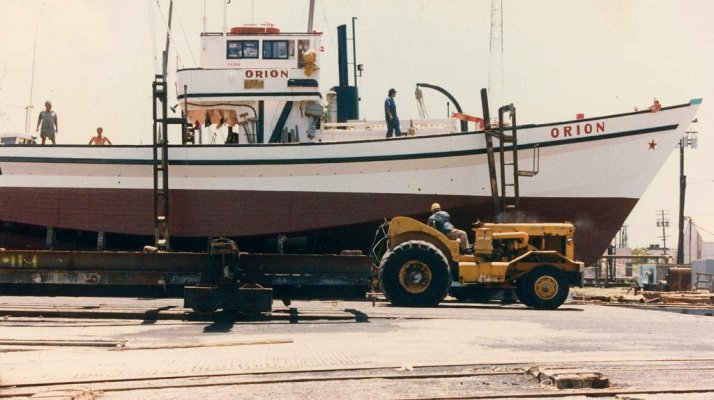Leon----
You may have posted this information already but if so I couldn't find it.* I'm curious about a couple of things----
Where was your boat made and when?* What is it made out of?* What kind of engine does it have?* Is it an example of the typical fishing boats used today, or does it date from an earlier type of fishing?
It's always fascinating to me to see the local fishing and utilty boats in the various places I've been (Malta, Malaysia,*Cyprus, Istanbul,*SE China, England, Scotland), so it's neat to see one being used for recreational purposes.
As I've stated before, one of my all-time favorite boat designs is the so-called "sampans" or "aku boats" that were used for commercial tuna fishing in Hawaii from the 1940 thru the 1980s or so.* I grew up there but never bothered to take a single picture of them even though I got to go out on them occasionally to film the style of fishing they did.* Except for a couple of derelicts, they're all gone now.* But if money was no object, I'd love to have the design recreated for my own use although it would be tricky to figure out how to accomodate decent living quarters without compromising the look of the boat.* Here's a shot of one (taken by someone else).
Anyway, I love the look of your boat and I think it's great you're keeping it going.
You may have posted this information already but if so I couldn't find it.* I'm curious about a couple of things----
Where was your boat made and when?* What is it made out of?* What kind of engine does it have?* Is it an example of the typical fishing boats used today, or does it date from an earlier type of fishing?
It's always fascinating to me to see the local fishing and utilty boats in the various places I've been (Malta, Malaysia,*Cyprus, Istanbul,*SE China, England, Scotland), so it's neat to see one being used for recreational purposes.
As I've stated before, one of my all-time favorite boat designs is the so-called "sampans" or "aku boats" that were used for commercial tuna fishing in Hawaii from the 1940 thru the 1980s or so.* I grew up there but never bothered to take a single picture of them even though I got to go out on them occasionally to film the style of fishing they did.* Except for a couple of derelicts, they're all gone now.* But if money was no object, I'd love to have the design recreated for my own use although it would be tricky to figure out how to accomodate decent living quarters without compromising the look of the boat.* Here's a shot of one (taken by someone else).
Anyway, I love the look of your boat and I think it's great you're keeping it going.


